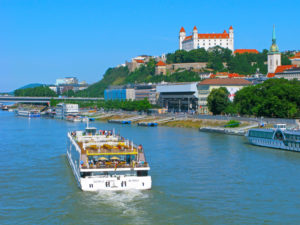Bratislava sits alongside the Danube, between Budapest and Vienna. Though once the capital of Hungary, it is smaller and less magnificent than its sister cities. Still, the city center is picturesque and charming, with a cathedral and Renaissance and Baroque buildings. Its castle (shown here) overlooks the river, as did the house where Laban was born in 1879.

This fairytale setting and Laban’s imagination provided solace for what appears to have been a lonely childhood. Because there were no suitable schools in the distant border garrisons where his parents were stationed, Laban was left with extended family, where he often felt “my presence was rather superfluous.” He rebelled by breaking windows at his school, getting expelled, and running away.
Of course, his flight was short-lived. He was apprehended, and his guardians managed to get him taken back by the school, to his regret. He much preferred the leisure hours spent with “my old friend, the painter… His countless sketches and pictures revealed more to me than I learned from all my school- or story books.”
As Laban notes in his autobiography, “I was gifted with sensibility for the visual and plastic arts and there was no other way to my inner self, to my character, than through a craft that corresponded to my talents.” Nevertheless, he graduated from the Bratislava Gymnasium. In keeping with his father’s wishes, his next port-of-call was Vienna, and the nearby military academy.
